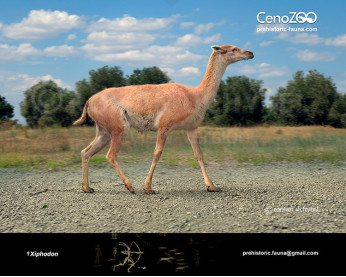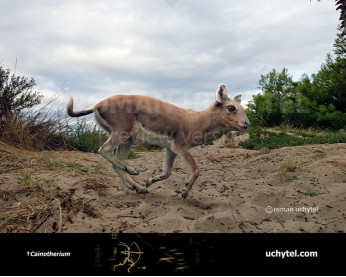Anoplotherium
2845828458
Anoplotherium (†Anoplotherium (Cuvier, 1804))
Order: Artiodactyla
Family: †Anoplotheriidae
Size: 2,5 m in length, 120 cm in height, 110-270 kg of weight
Time period: late Eocene to the earliest Oligocene of Europe (37–33.4 Ma)
Anoplotherium was amongst the largest artiodactyls of the Paleogene period, which was endemic to western Europe. It lived from the late Eocene to the earliest Oligocene. Today, it has four known species, although A. pompeckji is similar to A. laurillardi and not as well-defined in distinction. The artiodactyl lived in western Europe back when it was an archipelago that was isolated from the rest of Eurasia, meaning that it lived in an environment with various other faunas that also evolved with strong levels of endemism.
Anoplotherium was an evolutionarily advanced and unusual artiodactyl, sporting three-toed feet in certain species like A. latipes, a long and robust tail, and a highly-developed brain with strong support for both sense of smell and sensory perception. Its overall robust build may have allowed it to stand bipedally to browse on plants at greater heights, reaching approximately 3 m tall, effectively competing with the few other medium to large herbivores it lived with. The full extent of its bipedalism needs to be confirmed by more research, however. The larger, two-toed A. commune and slightly smaller, three-toed A. latipes may be sexual dimorphs in that the former is female and the latter male, but this idea remains speculative.
Its exact origins are unknown, but it arose long after a shift towards drier but still subhumid conditions that led to abrasive plants and the extinctions of the large-sized Lophiodontidae, achieving gigantism and establishing itself as a dominant herbivore throughout the entirety of the western European region given its abundant fossil evidence.
ITropical and subtropical forests were rapidly replaced by more temperate environments, and most ocean barriers previously separating western Europe from eastern Eurasia closed, allowing for large faunal dispersals from Asia. Although the specific causes are uncertain, Anoplotherium was likely unable to adapt to these major changes and succumbed to extinction, bringing the end of a mammal lineage with unique adaptations.
Payment
You may use multiple payment methods to buy image such as credit cards, PayPal and bank transfer.
Anoplotherium (†Anoplotherium (Cuvier, 1804))
Order: Artiodactyla
Family: †Anoplotheriidae
Size: 2,5 m in length, 120 cm in height, 110-270 kg of weight
Time period: late Eocene to the earliest Oligocene of Europe (37–33.4 Ma)
Anoplotherium was amongst the largest artiodactyls of the Paleogene period, which was endemic to western Europe. It lived from the late Eocene to the earliest Oligocene. Today, it has four known species, although A. pompeckji is similar to A. laurillardi and not as well-defined in distinction. The artiodactyl lived in western Europe back when it was an archipelago that was isolated from the rest of Eurasia, meaning that it lived in an environment with various other faunas that also evolved with strong levels of endemism.
Anoplotherium was an evolutionarily advanced and unusual artiodactyl, sporting three-toed feet in certain species like A. latipes, a long and robust tail, and a highly-developed brain with strong support for both sense of smell and sensory perception. Its overall robust build may have allowed it to stand bipedally to browse on plants at greater heights, reaching approximately 3 m tall, effectively competing with the few other medium to large herbivores it lived with. The full extent of its bipedalism needs to be confirmed by more research, however. The larger, two-toed A. commune and slightly smaller, three-toed A. latipes may be sexual dimorphs in that the former is female and the latter male, but this idea remains speculative.
Its exact origins are unknown, but it arose long after a shift towards drier but still subhumid conditions that led to abrasive plants and the extinctions of the large-sized Lophiodontidae, achieving gigantism and establishing itself as a dominant herbivore throughout the entirety of the western European region given its abundant fossil evidence.
ITropical and subtropical forests were rapidly replaced by more temperate environments, and most ocean barriers previously separating western Europe from eastern Eurasia closed, allowing for large faunal dispersals from Asia. Although the specific causes are uncertain, Anoplotherium was likely unable to adapt to these major changes and succumbed to extinction, bringing the end of a mammal lineage with unique adaptations.

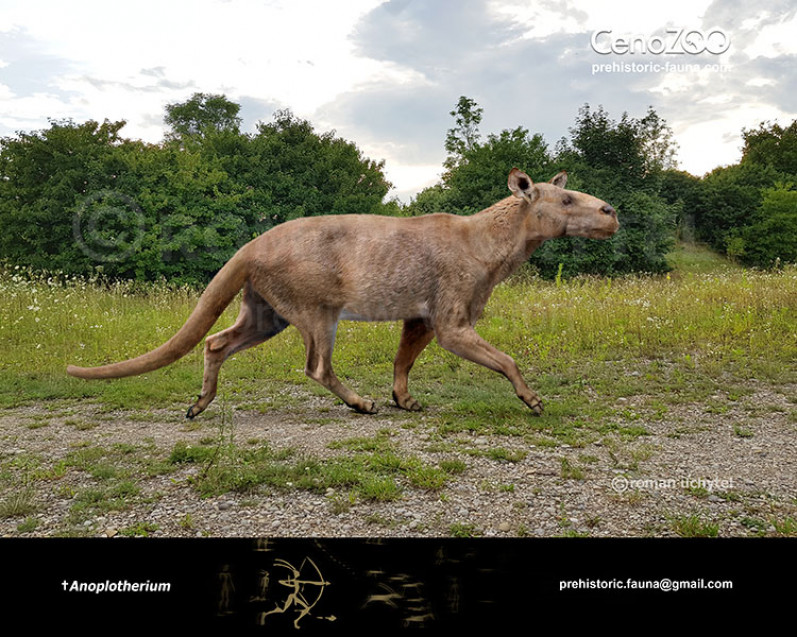
-797x638.jpg)
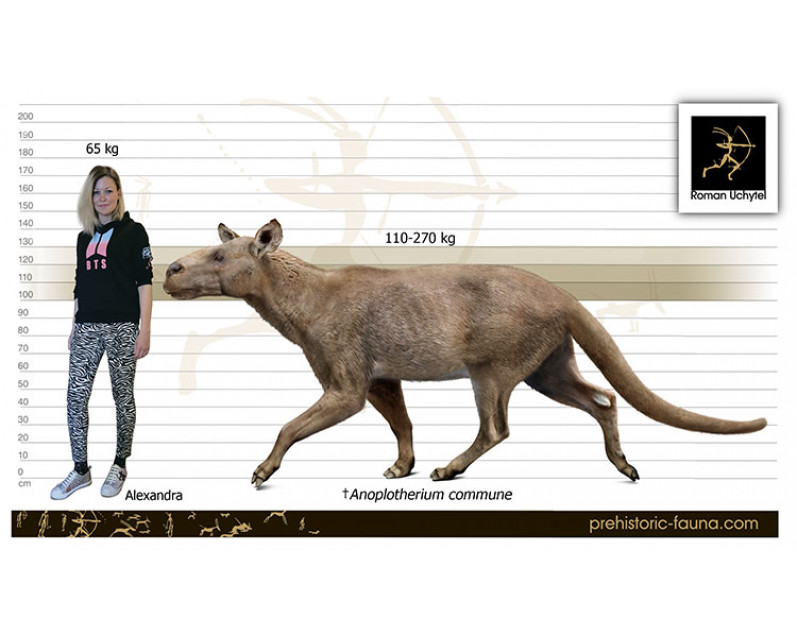

-70x56.jpg)

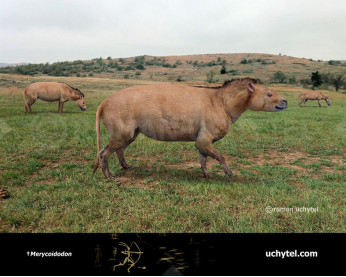
-346x277.jpg)
